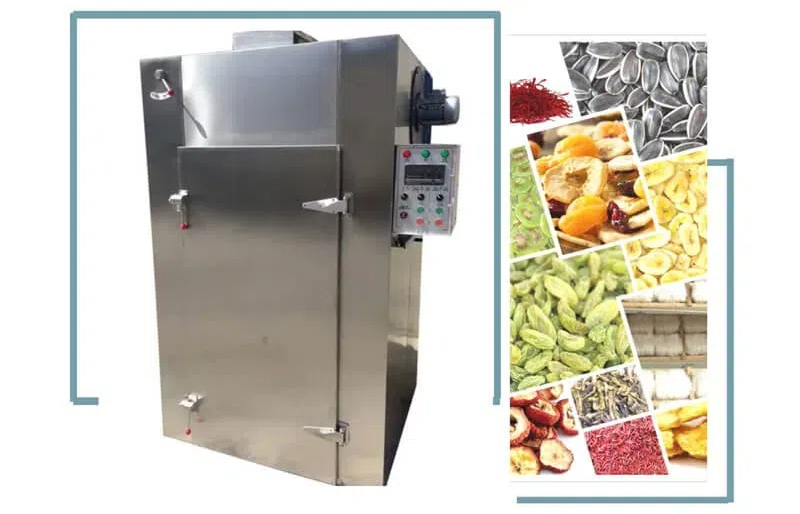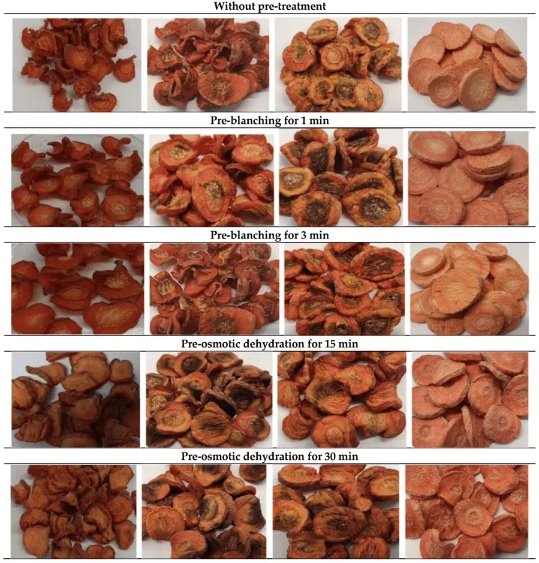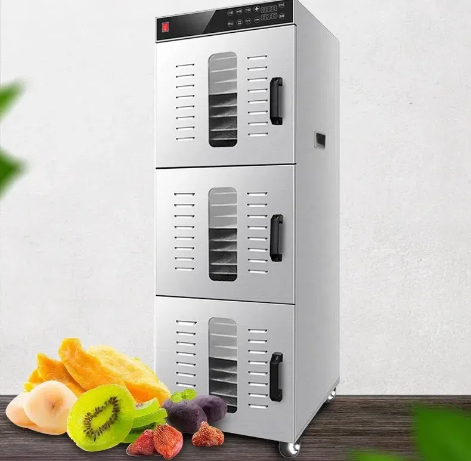
Content Menu
● Introduction to Air Distribution in Food Drying
>> Key Components of Air Distribution Systems
● Importance of Air Distribution Design
>> Advanced Air Distribution Technologies
● Configurations for Effective Air Distribution
>> Main and Lateral Duct System
>> Single Central Perforated Duct System
>> Perforated False Floor System
● Design Considerations for Air Distribution Systems
>> Future Developments in Air Distribution Design
● Case Studies: Successful Air Distribution Designs
● Challenges and Solutions in Air Distribution Design
>> Overcoming Challenges with Innovative Solutions
● Conclusion
● FAQs
>> 1. What is the purpose of air distribution systems in food drying?
>> 2. What are the common types of air distribution systems used in food drying?
>> 3. How does air distribution affect the quality of dried food products?
>> 4. What factors should be considered when designing an air distribution system for food drying?
>> 5. How can advanced technologies improve air distribution in food drying?
● Citations:
In the realm of food drying, air distribution plays a pivotal role in ensuring efficient and effective drying processes. As a Chinese manufacturer of food drying machines, providing OEM services to international brands, wholesalers, and manufacturers, understanding the intricacies of air distribution design is crucial for delivering high-quality drying solutions. This article delves into the importance of air distribution design in food drying, highlighting key concepts, technologies, and configurations that enhance drying efficiency.

Introduction to Air Distribution in Food Drying
Air distribution systems are designed to deliver drying air uniformly throughout the drying zone, ensuring that moisture is effectively removed from the food products. This uniformity is critical for maintaining product quality and preventing over-drying or under-drying, which can lead to spoilage or reduced shelf life.
Key Components of Air Distribution Systems
1. Air Ducts: These are commonly used in fixed-bed dryers for distributing air through the grain bulk. While they are cost-effective and easy to manufacture, they may not provide the most uniform air distribution, especially at higher initial moisture contents.
2. False Floors: These are widely used in heated air drying systems, particularly in perforated false floor configurations. Air is introduced under the floor, passing up through perforations and through the food products, ensuring efficient drying.
3. Air-Sweep Floors: These are used in some drying systems to enhance air circulation and reduce moisture accumulation.
Importance of Air Distribution Design
Effective air distribution design is essential for several reasons:
- Uniform Drying: It ensures that all parts of the food product are exposed to the same drying conditions, preventing uneven drying.
- Energy Efficiency: Proper air distribution minimizes energy waste by optimizing airflow and reducing unnecessary heating or cooling.
- Product Quality: Uniform drying helps maintain the nutritional value and texture of food products.
Advanced Air Distribution Technologies
Recent advancements in air distribution systems include the use of advanced materials and configurations that enhance airflow efficiency. For example, the Witte Co. has developed fluid bed dryers with advanced air distribution systems that generate vertical airflow at constant velocities, ensuring uniform drying.

Configurations for Effective Air Distribution
Main and Lateral Duct System
This system involves a main duct with lateral branches that distribute air throughout the drying area. It is versatile and can be adapted to various bin configurations.
Single Central Perforated Duct System
Used primarily for drying maize cobs, this system requires a uniform thickness of material around the duct to ensure even air distribution.
Perforated False Floor System
This is one of the most common systems for heated air drying. It involves introducing air under a perforated floor, allowing it to pass through the food products efficiently.
Design Considerations for Air Distribution Systems
When designing an air distribution system for food drying, several factors must be considered:
- Material Type: Different materials have varying drying requirements. For instance, regrind flake may require longer drying times compared to virgin pellets.
- Airflow Rate: The rate at which air passes through the system affects drying efficiency. Higher airflow rates can be beneficial but must be balanced with energy efficiency.
- System Layout: The layout of the drying facility influences the choice of air distribution system. Factors such as the location of the drying chamber and the distance air needs to travel are critical.
Future Developments in Air Distribution Design
Future advancements in air distribution design will likely focus on enhancing efficiency, reducing energy consumption, and improving product quality. Technologies such as smart sensors and automated control systems can optimize airflow based on real-time conditions, ensuring optimal drying outcomes.
Case Studies: Successful Air Distribution Designs
Several case studies highlight the effectiveness of well-designed air distribution systems:
1. Fluid Bed Dryers: Companies like the Witte Co. have successfully implemented fluid bed dryers with advanced air distribution systems, achieving uniform drying and reducing energy costs.
2. Rotary Dryers: Rotary dryers with optimized air distribution have been used effectively in drying large quantities of food products, such as grains and fruits.
3. Tunnel Dryers: Tunnel dryers with precise air distribution systems are commonly used for drying vegetables and fruits, ensuring consistent quality.
Challenges and Solutions in Air Distribution Design
Despite the advancements in air distribution design, several challenges persist:
- Energy Consumption: High energy costs remain a significant challenge. Solutions include optimizing airflow rates and using energy-efficient drying technologies.
- Product Variability: Different food products have unique drying requirements. Solutions involve designing systems that can adapt to various product types.
Overcoming Challenges with Innovative Solutions
Innovative solutions such as using renewable energy sources and implementing advanced drying technologies can help mitigate these challenges. For instance, solar-powered drying systems can significantly reduce energy costs while maintaining drying efficiency.
Conclusion
Air distribution design is a critical component of effective drying solutions in the food industry. By understanding the principles of air distribution and implementing advanced technologies and configurations, manufacturers can enhance drying efficiency, reduce energy costs, and improve product quality. As the demand for high-quality dried foods continues to grow, the role of air distribution design will become increasingly important in meeting these demands.

FAQs
1. What is the purpose of air distribution systems in food drying?
Air distribution systems are designed to deliver drying air uniformly throughout the drying zone, ensuring efficient moisture removal from food products.
2. What are the common types of air distribution systems used in food drying?
Common types include main and lateral duct systems, single central perforated duct systems, and perforated false floor systems.
3. How does air distribution affect the quality of dried food products?
Uniform air distribution ensures that all parts of the food product are dried evenly, maintaining nutritional value and texture.
4. What factors should be considered when designing an air distribution system for food drying?
Factors include material type, airflow rate, and system layout, as well as future expansion needs.
5. How can advanced technologies improve air distribution in food drying?
Technologies such as smart sensors and automated control systems can optimize airflow based on real-time conditions, enhancing efficiency and product quality.
Citations:
[1] https://info.topring.com/en/blog/how-design-compressed-air-system
[2] http://courseware.cutm.ac.in/wp-content/uploads/2021/02/Types-of-seed-dryers-2.pdf
[3] https://patents.google.com/patent/CN110207480A/zh
[4] https://www.witte.com/advanced-air-distribution-system-generates-vertical-air-flow-at-constant-velocity-for-uniform-drying/
[5] http://www.knowledgebank.irri.org/step-by-step-production/postharvest/drying/dryer-components/item/air-distribution-system
[6] https://patents.google.com/patent/WO2022068971A1/zh
[7] https://www.dryeratech.com/the-importance-of-air-distribution-in-hang-type-dryers.html
[8] https://www.spxflow.com/anhydro/products/triple-a-spray-dryers/
[9] https://www.plasticstoday.com/plastics-processing/the-low-down-on-dryer-airflow











